Adobe Lightroom 3 Review
Adobe Lightroom 3
We take a look at the latest version of Adobe's professional image management software.
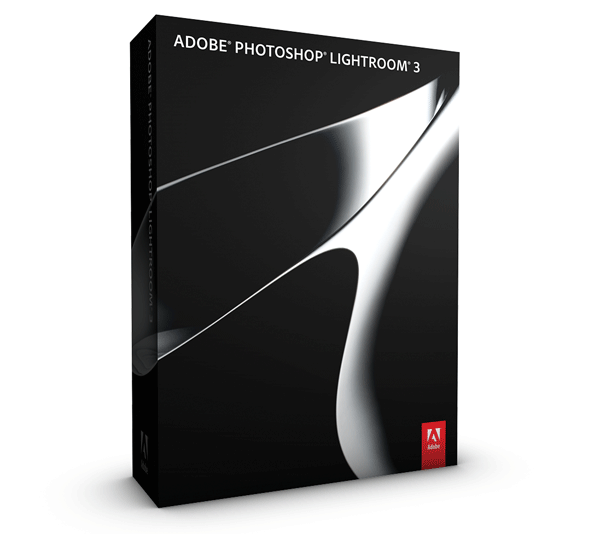
Verdict
Key Specifications
- Review Price: £232.65
 (centre)
(centre)
Best Software(/centre)
Adobe Photoshop Lightroom is an image management program designed to help photographers organise, improve and present their photos. First launched in 2007 it has quickly become a popular tool for professional photographers, and is widely considered the industry standard for camera Raw workflow. Lightroom is not intended to be an image editing program as such, although it can be used to make modifications to images, but rather it is designed to work alongside Adobe Photoshop, with that program handling the serious editing work. Lightroom is used to organise large collections of photos, develop and process JPEG and Raw file images, and to present, print and publish the results.
The latest version, Lightroom 3, was launched earlier this month, and adds a number of new features as well as improving the performance of many key operations. Available for both Mac OS X 10.5/10.6 and Windows 7 or Vista (in both 32-bit and 64-bit) and XP Service Pack 3, Lightroom 3 currently sells for £232 (inc. VAT) for the full version, or £74 for an upgrade version from Lightroom 2. No upgrade from Lightroom 1 is available. There is a student version available for around £64. Lightroom’s only real competitors are Apple’s Mac-only program Aperture, also currently on version 3.0 and costing around £170, and the highly regarded Bibble 5 Pro, available for Linux, Windows or Mac and costing around £127.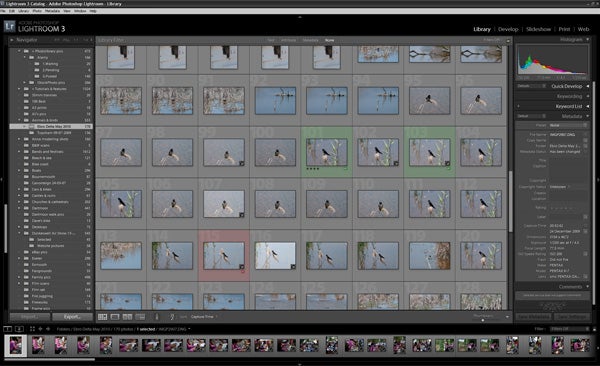
The key improvements in Lightroom 3 are faster library importing, better noise reduction and sharpening algorithms, improved lens correction, perspective correction, more flexible watermarking, easy-to-use drag and drop web gallery publishing, improved multi-image print layouts, and tethered capture for use in the studio. Also improved are some of the filter effects, video file handling and the ability to export video and PDF slideshows with music.
A major problem facing most professional and keen amateur photographers is how to manage and organise the vast collection of image files that can build up over the course of a few years. Professional photography isn’t even my main job, and yet I’ve got over 40,000 photographs on my hard drive, many of them large Raw files from professional quality DSLRs; professional working photographers could easily have two or three times as many. Other image management programs such as Google Picasa, or the browser sections of Adobe Photoshop Elements or Corel Paint Shop Pro can have real problems with such large collections, taking many hours to sift through and catalogue images, or simply failing altogether and crashing. Adobe Lightroom 3 took about 30 minutes to import and catalogue my entire collection, presenting the results as a database searchable under a wide range of criteria including camera EXIF data. As you can imagine, being able to search for pictures taken on a particular make and model camera or with a particular type of lens comes in very handy in my line of work.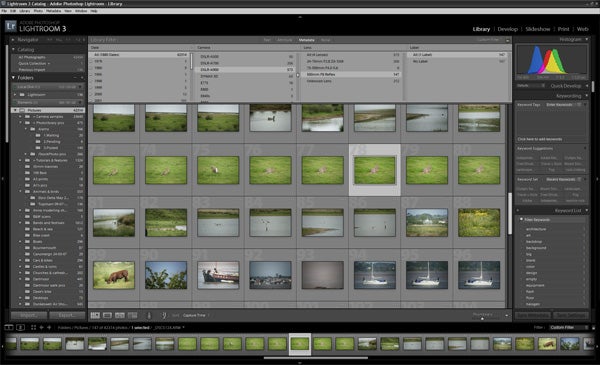
Also useful is the built-in support for dual monitors, with the second monitor display being configurable to show the currently selected image, the library grid, a survey comparison or a slideshow of images in a folder. It is this adaptability that is one of Lightroom’s great strengths and one of the reasons that it is so popular with professionals; you can set it up to suit the way you want to work, adapting it to your preferred workflow rather than having to adapt your methods to suit the program. The interface is surprisingly simple for such a complex and powerful program, with everything organised into logical sections called Library, Develop, Slideshow, Print and Web. The grey-on-black colour scheme looks a bit Spartan but it is efficient and functional, although it definitely benefits from using a big monitor, and preferably two of them.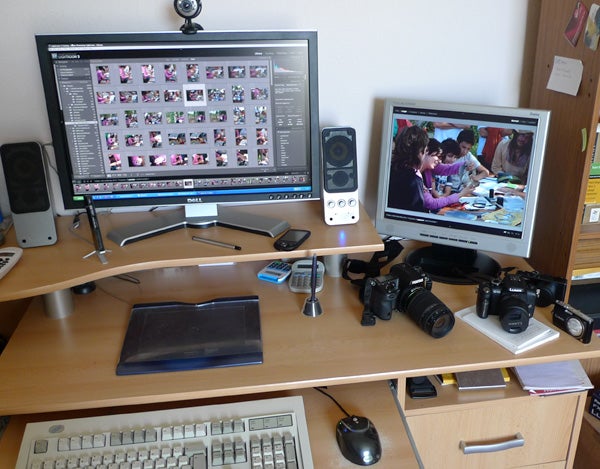
The algorithms, modules and engines that power the program have been completely rewritten for Lightroom 3, leading to improved performance for a wide range of operations. Corrections for lens distortion and chromatic aberration are faster and more effective, and can be saved as profiles for particular lens and camera combinations to be applied with a single click to one or a selected batch of images. Camera lenses can be detected and recognised automatically thanks to inbuilt metadata, and corrections for recurring distortions can be applied automatically. A variety of distortion-correcting transformations can be applied, including horizontal and vertical perspective, keystone and rotation.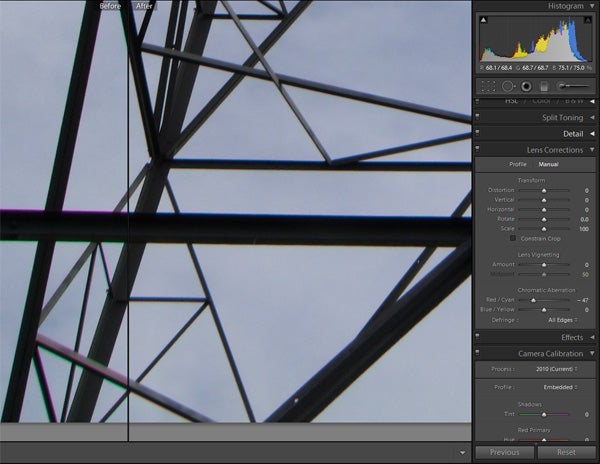
One of the most important improvements is the new noise reduction engine, which is designed to handle even high levels of noise without reducing edge detail. Like the rest of the program it is quick and easy to use, and the results are extremely impressive, surpassing even the very effective noise reduction system of Photoshop CS4. It can easily pull an extra two stops worth of detail out of high-ISO images, allowing high-end DSLR cameras to be used at settings as high as 6400 ISO and still produce acceptable results, a real boon for professional photographers. Even small compact cameras, typically very prone to noise above 400 ISO, can benefit from this treatment.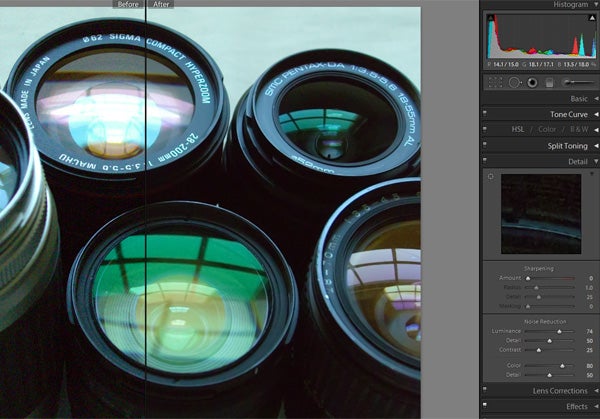

The Camera Raw processing engine has also been overhauled, with its quality again surpassing the standard Adobe Camera Raw used in Photoshop. Processed Raw images can be exported into Photoshop for further editing as usual, but the new process version system ensures that older images, which have been processed using Camera Raw, can be either kept unchanged or re-processed using the new algorithms.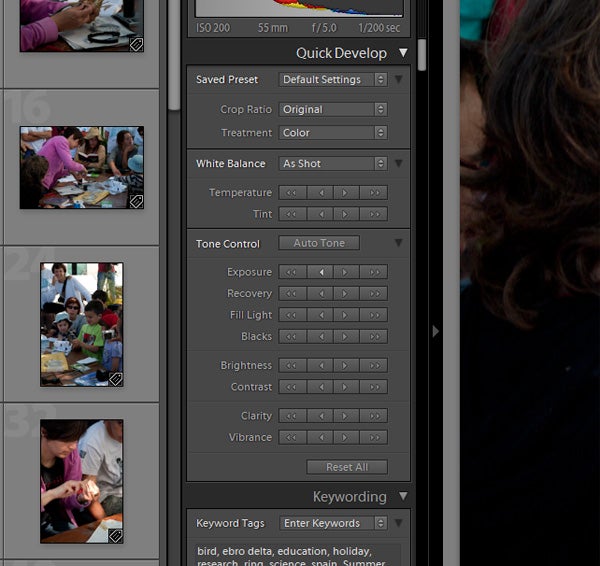
Many of the filter effects and special processing simulations have been improved, with effects such as bleach processing, infrared, vintage colour and more available as pre-set filters. Natural-looking vignetting and film grain have also been added to offer more choice for those who prefer their images less than perfect.
The output section of the program has also seen major improvements. Changes to the printing section include the ability to produce multi-image print layouts and contact sheets. Images can be dragged and dropped into pre-set layouts, and the layouts can be customised by dragging and re-sizing the frames. Custom layouts can be saved as user pre-sets.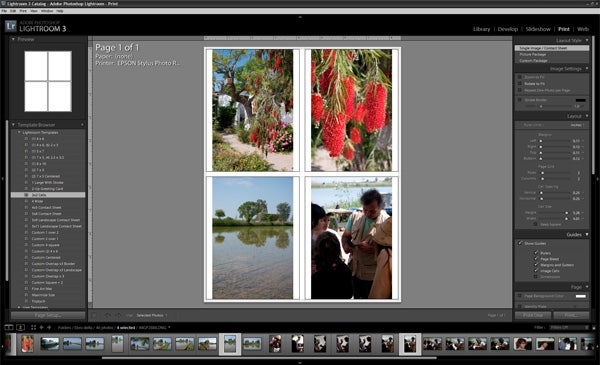
Another new feature is the ability to output video and PDF slideshows with music, obviously useful for presentations and portfolio demonstrations. The intro screen, background, drop shadow effects and title header can all be customised. The duration of the slideshow can be automatically set to the length of the selected soundtrack, which can save a lot of messing about with sound editing. Lightroom 3 also features a well-featured and easy-to-use web publishing section, which can output a ready-made image gallery which can be uploaded to a website. It has an extensive list of pre-set styles, which can be customised with title text, captions, EXIF data and more.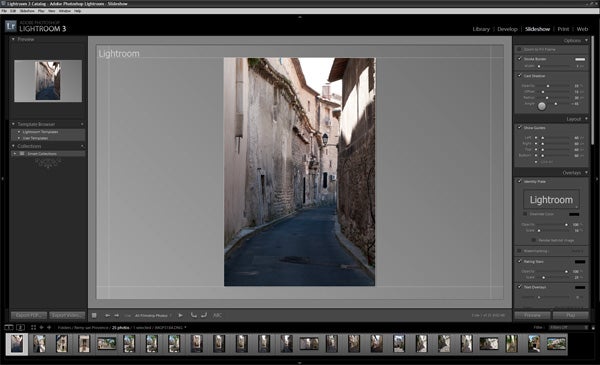
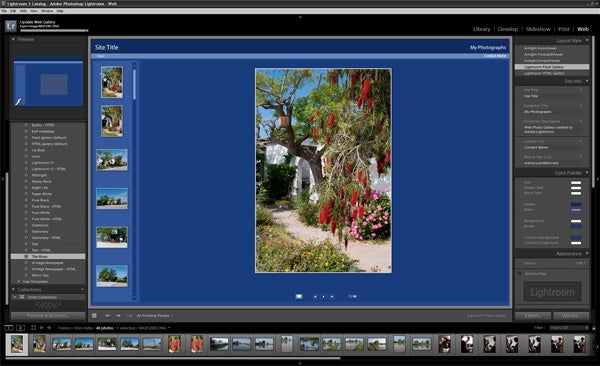
”’Verdict”’
Adobe Photoshop Lightroom 3 is an astonishingly versatile and capable program, packed with advanced features and clever details, and a real one-stop-shop for all your photo management and processing needs. It is more than just a cosmetic upgrade of the previous version too; it is faster, easier to use, has many new features and big improvements to existing ones. If you’re a professional or keen amateur photographer and you haven’t tried it already, do yourself a massive favour and download the trial version from Adobe’s website right away.
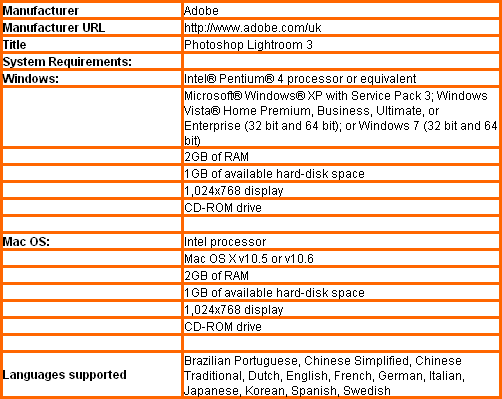
Trusted Score
Score in detail
-
Value 9

